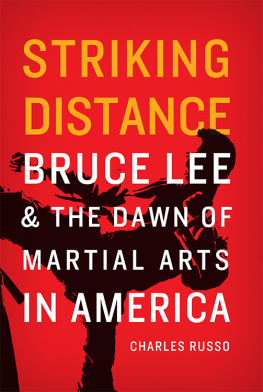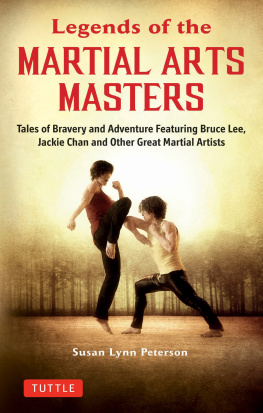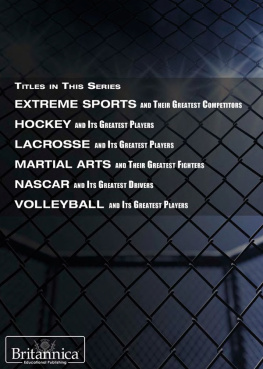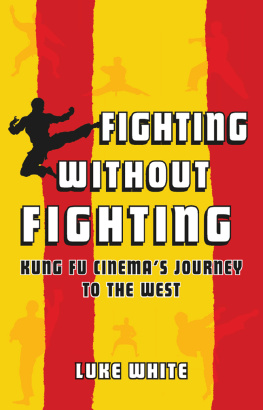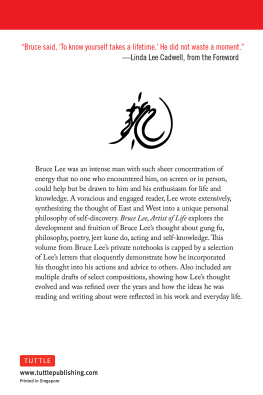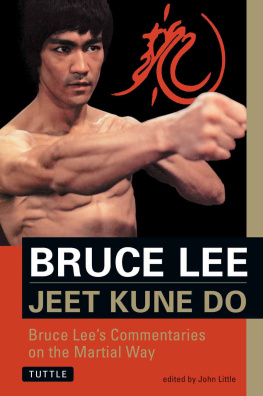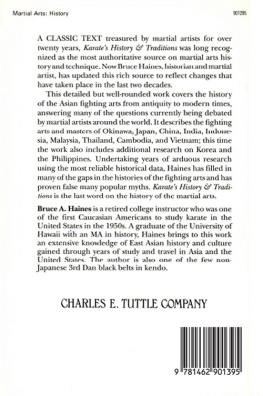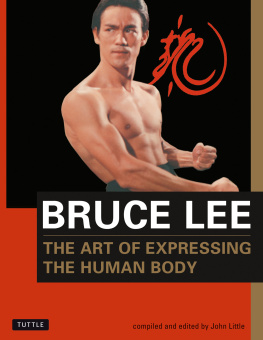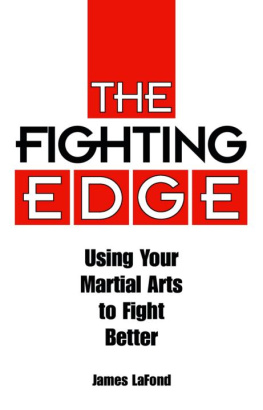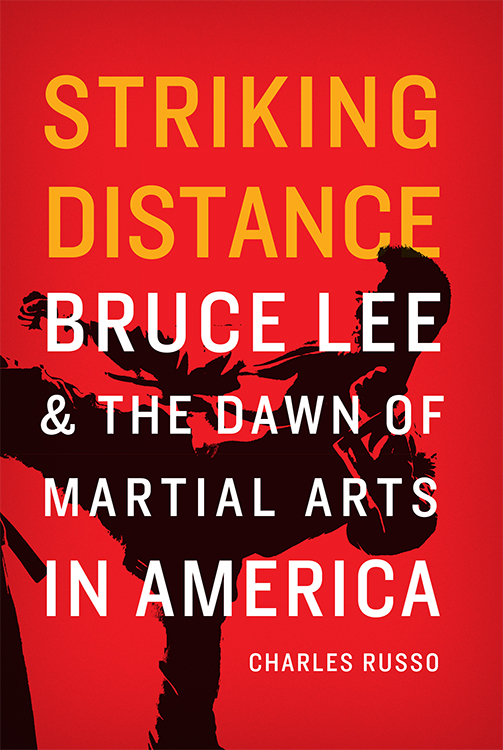Title: Striking distance: Bruce Lee and the dawn of martial arts in America / Charles Russo.
Description: Lincoln: University of Nebraska Press, [2016] Includes bibliographical references and index.
ISBN 9780803269606 (cloth: alk. paper)
Subjects: LCSH : Lee, Bruce, 19401973. | Martial artistsUnited StatesBiography. | Martial artsUnited StatesHistory.
Classification: LCC GV 1113. L 44 R 87 2016 | DDC 796.8092dc23
The publisher does not have any control over and does not assume any responsibility for author or third-party websites or their content.
For Angelo and Cel...
Do not repeat the tactics which have gained you one victory, but let your methods be regulated by the infinite variety of circumstances.
The Dissident
Alameda, California | 1964
the past two days cooking four whole pigs in the narrow confines of his backyard.
A native-born Hawaiian with a bright disposition and vertical build, Wally knew how to construct a proper Imu, even if the islander earth-oven was poorly suited for mainland suburbia. Following his usual routine, he dug the pit, stacked the firewood, arranged the rocks, and spread the banana leaves. The barbecues pyre ascended high over his backyard fence, quickly igniting a flurry of 9-1-1 calls on rotary dials. And like clockwork the Alameda Fire Department sent an engine over just as the rich aroma began to pervade Eagle Avenue.
Their inspection, however, was little more than a formality. Wally had been hosting his giant luau parties twice a year for almost a decade now, and the firemen from nearby Station 3 had long since become accustomed to the massive Hawaiian barbecue that preceded the event.
Fire Chief William Hilbish had even become chummy with Wally over the years, noticing that the jujitsu master seemed to exude nothing but humility and good manners. For someone with a reputation for tossing grown men about like rag dolls on the mat, Wally appeared to be a gentle soul. Besides, Hilbishs guys were always fascinated to see the island-style earth-oven blazing away in a neighborhood yard.
, well see you in six months, Hilbish said, as he departed alongside the training studio at the rear of the house. Enjoy your luau.
chicken long rice, ten-gallon pots of poi, platters of lomi lomi salmon, and a tropical orchards worth of sliced pineapple. She handed these dishes off for delivery as soon as they were ready, grabbing whichever of their children or students were passing through the kitchen at the time and ordering them to load everything into the family station wagon for delivery to the luaus venue, at nearby Colombo Hall.
, Wally remained excited. His summer luau was looking to draw upward of a thousand partygoers, and the big turnout boded well for his judo students and their next excursion to compete abroad. Wally always used the partys ticket-sale revenue to take his students around the hemisphere for tournaments, tightly packing them all into his station wagon (at present, loaded heavy with platters of teriyaki lingcod) and driving them around North America to compete against whoever invited them out for a match. His team cleaned up straight through to Vancouver on their trip the previous spring, and Wally was itching to get them out again.
Not that he was surprised by the high ticket sales. Wally knew the second he booked Hawaiis Songbird Lena Machado to sing at his luau that she would draw a considerable crowd. performances at the San Francisco Worlds Fair in 39, her soaring falsetto drew Bay Area Hawaiians like an islander incarnation of the Pied Piper.
, his buddy James Lee had arranged for a special martial arts guest to come down from Seattle to perform. And that prospect was shaping up to be every bit as exciting as hearing Machado sing. Over the last few years, the martial arts demonstrations had become a big part of the luau entertainment, and this friend of theirs from Seattle... well... Wally knew the kid to be a showstopper.
south from Vallejo along I -80 in his metallic green Ford Fairlane, as the late day summer sun glimmered in gold rush hues on the water of San Francisco Bay. Further out toward the horizon, a vast fog was gathering on the Pacific, threatening to move inland and impose its grayness on the glow of the Golden Gate. The Bay Area was nothing if not atmospheric, and after growing up in Arkansas, Fong still regularly marveled at the California scenery.
Merging onto 24 toward Oakland, Fong thought of how his parish reassignment from Sacramento to Vallejo had cut down so heavily on his commute times, just as how his departure from Chinatown to study with James Lee in the East Bay kept him from suffering Bay Bridge traffic. Fong had been traveling to San Francisco for kung fu lessons for the past few years, first at Hung Sing off of Portsmouth Square, and then at Kin Mon, up on Waverly. These days he was making the weekly trip to practice in Jamess garage, out toward the Oakland foothills.
Unlike most practitioners of the time, Fong did not derive his martial arts identity from any one particular school or method. Even as his foundation was in American boxing, Fong had studied jujitsu, taekwondo, and a variety of kung fu styles since moving to California. Still, he felt inclined to keep looking and experimenting, to continue chasing down some sort of ultimate fighting style.
It was in this regard that he had found a like-minded mentor in James Lee, who was almost ten years his senior, but one of the more forward-thinking martial artists he had met. Not only did James share Fongs interest in various styles, but he was always proactively on the lookout for technique that could prove effective in a street fight. Whereas Fong grew up beating back the racism of corn-fed Ozark boys, James had made a name for himself fighting on the blue-collar streets of Oakland. Different worlds, sure, but they both understood the stark and spontaneous nature of real fighting.
Fongs schedule limited him to only a weekly practice session in Oakland, but the second he arrived James would excitedly convey something new that he had come across that week. Like Fong, James didnt have firm allegiance to a particular style or system but rather always put the emphasis on effectivenessDoes it work? The new techniques he related were always something viable, something that could prove worthwhile in a street fight: a streamlined type of kick or a viciously effective choke hold.
It was one of those zealous reports from James that now had Fong on the road to Oakland for Wally Jays luau, though to check out not a fighting technique but an individual fighter. Fong was somewhat indifferent to the invitation at first, but he was won over by Jamess enthusiastic descriptions of the guy slated to perform at the luau: some twenty-year-old martial arts dynamo from Seattle.
Some kid named Bruce.
and explained why he wasnt breaking bricks.

